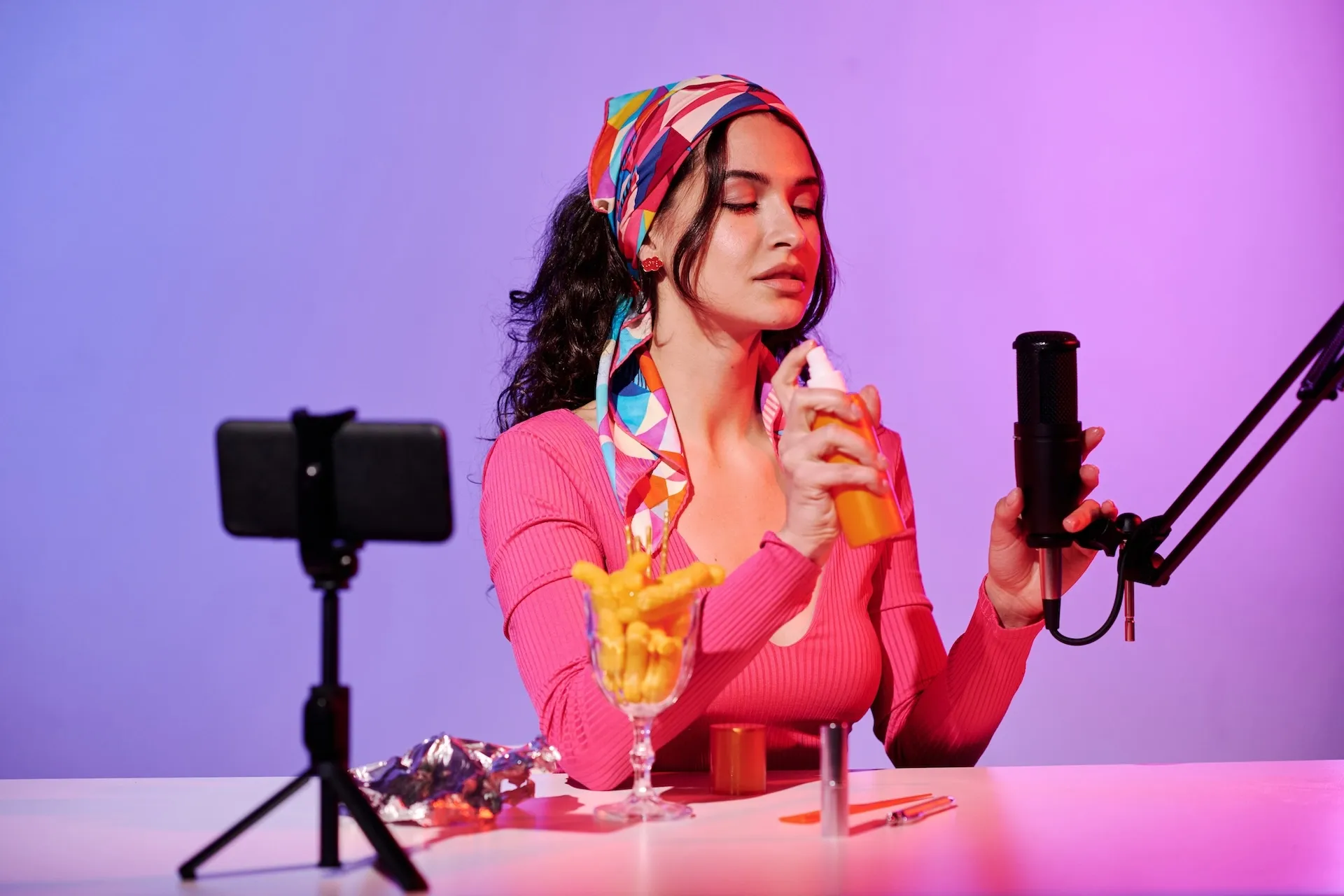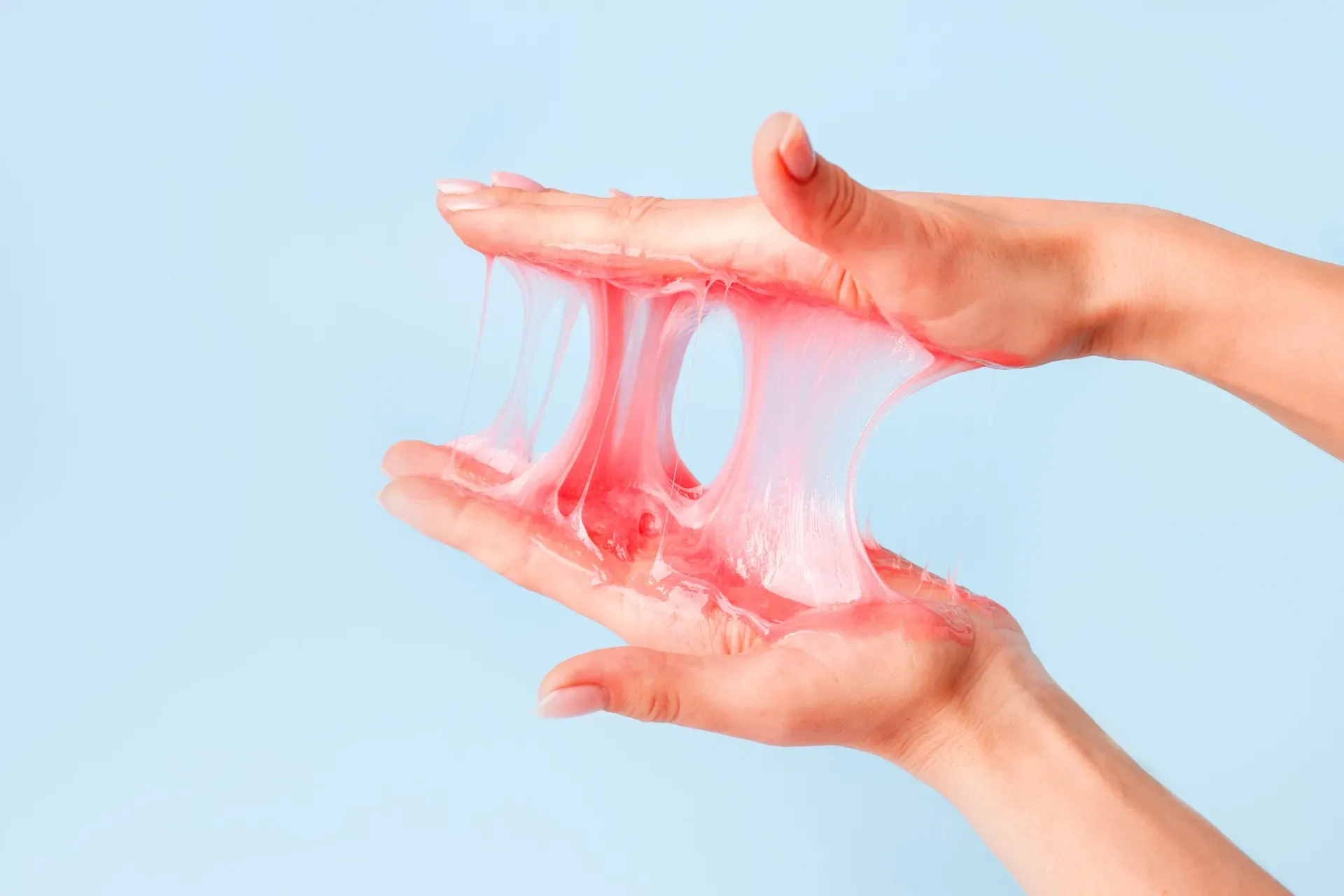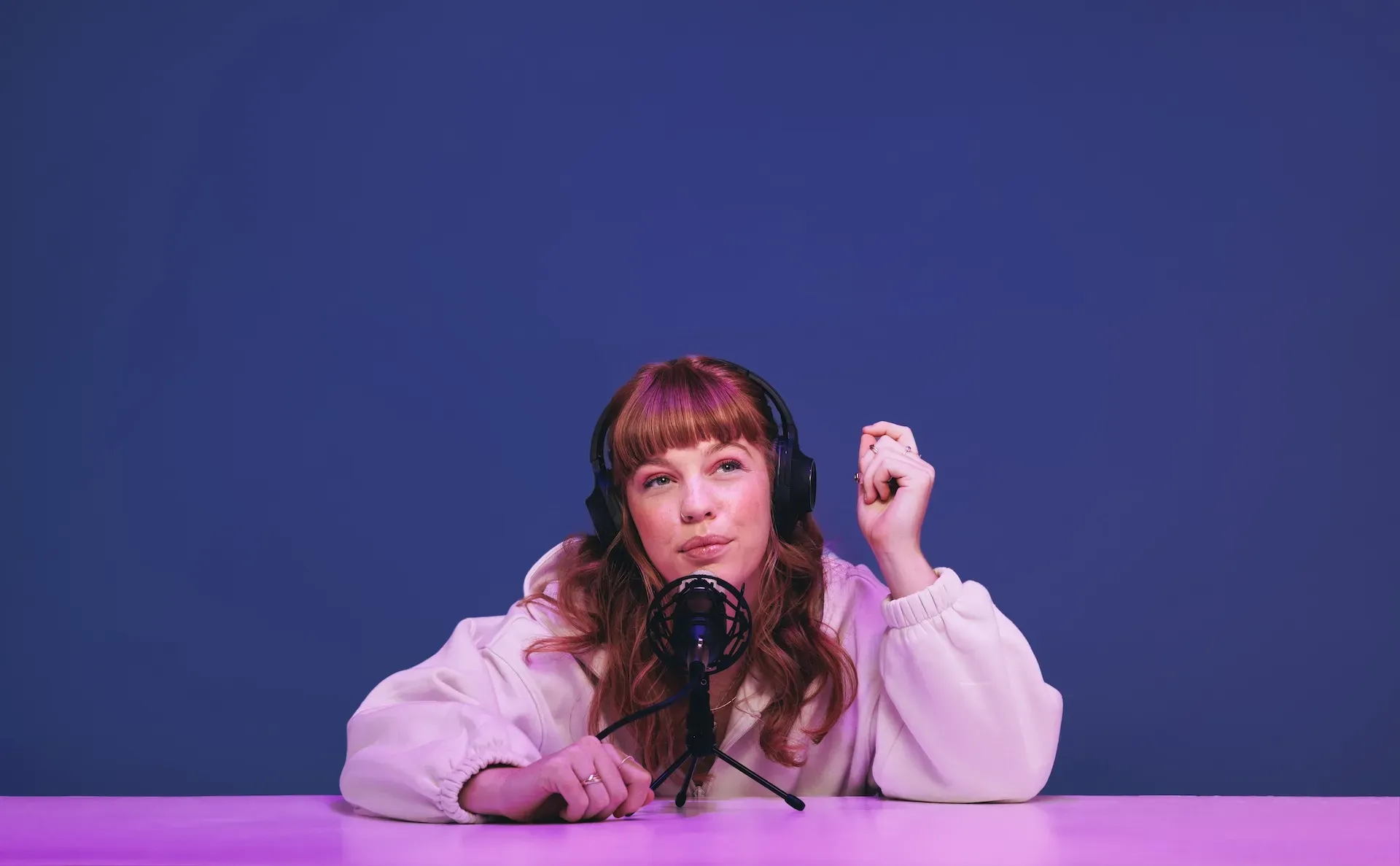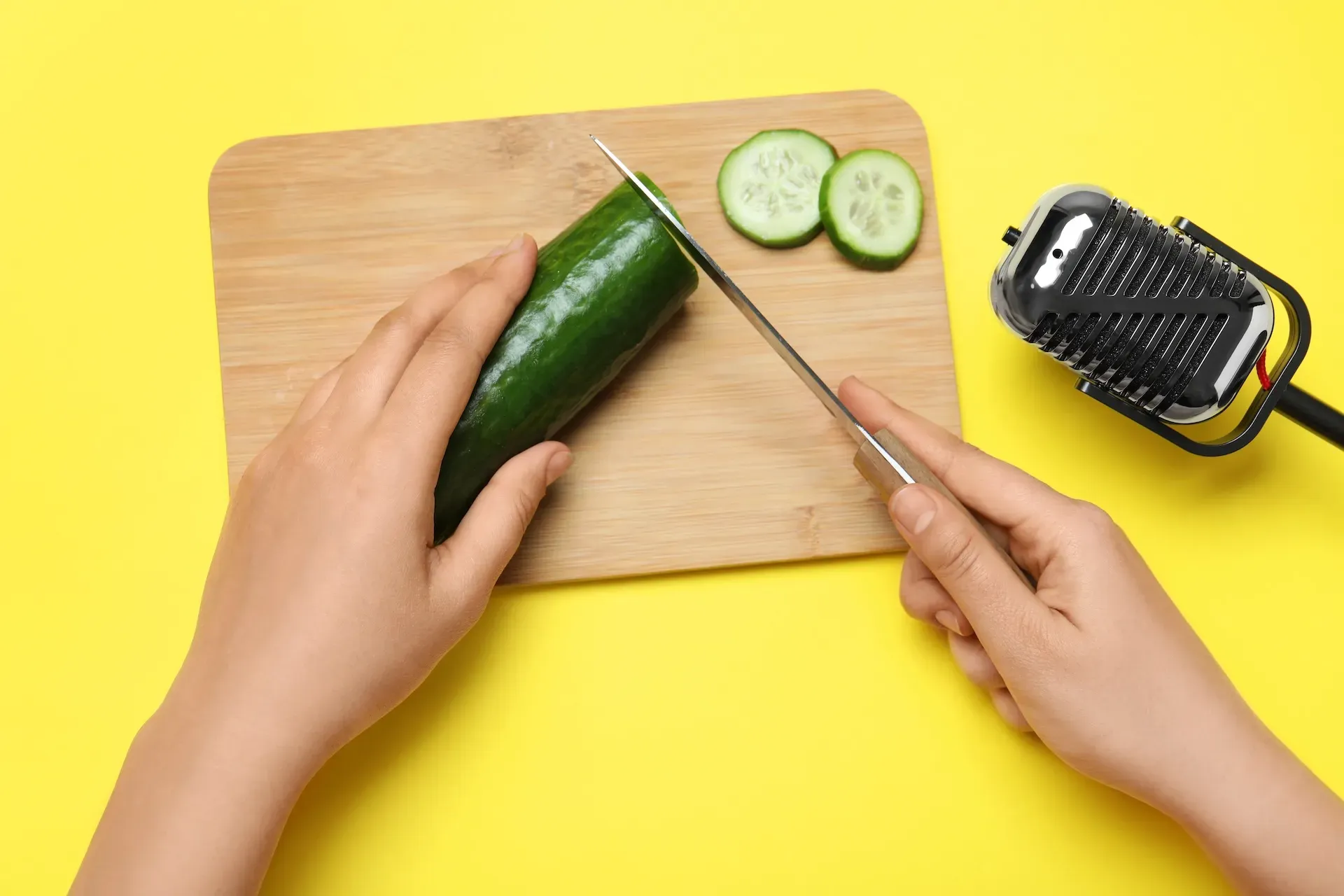What is ASMR and why should you use it in your content?
ASMR is an odd, spine-tingling phenomenon. But what is it, what does it stand for, what are the benefits, and how can you make ASMR videos? Find out here.

Want to use ASMR in your content? Learn exactly what it is, what the benefits are, and how you can best leverage it in your projects.
Today, we’ll cover:
- What does ASMR stand for?
- Why is ASMR so popular?
- Who invented ASMR?
- Is ASMR backed by science?
- What are the benefits of ASMR?
- Can everyone experience ASMR?
- Is ASMR good for ADHD?
- Is ASMR good for autism?
- Is ASMR safe?
- How do you make good ASMR videos?
What does ASMR stand for?
ASMR stands for autonomous sensory meridian response. It’s a term used to describe relaxing, often sedative, and sometimes sensual sensations that start at the top of the head, running down the body and through the spine.
It’s also known as a ‘brain massage,’ and is usually triggered by sounds like whispering, tapping, chewing, and crackling. It can also be triggered by visual stimuli — think of those satisfying videos of people organizing shelves, cutting cucumbers into perfectly regimented slices, and the like. Watch Gentle Whispering ASMR’s video below to get a feel for it.
Let’s break down what each word in ASMR means:
- Autonomous: Spontaneous or self-governing — it just pops up
- Sensory: Regarding senses or sensation
- Meridian: Referring to a peak or climax
- Response: The response triggered by the noise
Why is ASMR so popular?
ASMR is popular because it gives people that little hit of what they need. The sheer pleasure of hearing someone tap their fingers on a table or slowly smash up a watermelon — it’s a primal, instant gratification you’d struggle to find elsewhere. It’s little surprise, then, that #asmr has more than 17 million posts on Instagram and more than 28 million on TikTok.
ASMR is now so popular, it’s crept into mainstream culture. One of the more obvious examples is Billie Eilish, who includes pops, clicks, and assorted noises in her music. Coupled with the visuals in a video like Bad Guy, it’s an ASMR feast.
Who invented ASMR?
ASMR sounds like a relatively new concept, but its origins go way back. If you ever studied poetry at school, you’ll be familiar with terms like onomatopoeia, iambic pentameter, and other words you’ll never use in the real world.
Definitions like these describe the feel, the sound, the rhythm of the poem. A stanza stacked with sibilants should slither through your skull like a shiny, slippery snake — if read aloud, it could elicit a response similar to ASMR. On top of that, Virgina Woolf literally described the effects of ASMR 100 years ago, during a passage in her classic novel, Mrs. Dalloway.

In its current form, ASMR found its feet in the early days of social media and viral video content. By 2010, the term was officially coined by Jennifer Allen, who’d followed the phenomenon throughout the 2000s and lobbied for it to be taken seriously. Nowadays, people make a living out of ASMR, and even have a name for themselves: ASMRtists.
Need ASMR-style soundscapes for your content? Epidemic Sound works with artists like Bruce Brus, who create dreamy, noise-based tracks that’ll make spines tingle.
Why not dive into our massive selection of ASMR tracks, or our Sleep & ASMR playlist? If that doesn’t scratch your itch, you can always explore Epidemic Sound’s full catalog of more than 40,000 tracks and 90,000 sound effects. We’re sure you’ll find what you’re looking for.

Is ASMR backed by science?
ASMR is still a fairly new concept — as such, there isn’t mountains of research to back up its benefits and drawbacks. However, it has been linked to the ‘love hormone,’ oxytocin, and dopamine, the ‘happy hormone.’ Some people dismiss it as pseudoscience, and others remain skeptical until more structured, concrete research is undertaken.
What are the benefits of ASMR?
While ASMR isn’t as rigorously tested and explored as other online phenomena, it’s still been under the microscope long enough for us to understand the upsides. Some of those include:
- Enjoyment: The shivers and tingles elicit pleasure, calm. The effects are near-immediate — if ASMR works for you, it’s a one-stop ticket to relaxation.
- Wellbeing: Studies indicate that 80% of participants experience a mood pickup after exposure to ASMR. Research also suggests that ASMR can deliver chronic pain relief for up to three hours.
- Sleep: Studies show that ASMR can gear your brain up for a good night’s sleep. According to studies, 82% of respondents cited ASMR as something they’d use to induce sleep.
- Concentration: Research suggests that ASMR can help people enter a ‘flow state,’ in which you lose yourself in a task or activity.

Can everyone experience ASMR?
Despite its popularity, not everyone’s on the ASMR train. Some people don’t experience the sensation at all, while others may straight-up hate it. There’s no way of knowing how many people it will affect, and to what extent. For that reason, it pays to consider when and where you use ASMR in your content.
Is ASMR good for ADHD?
People with attention deficit hyperactivity disorder (ADHD) may exhibit impulsive behavior, short attention spans, and hyperactivity. Scientific research suggests that ASMR can help reinforce concentration. While there’s no research outright stating that ASMR helps people with ADHD, it’s often used in meditation- and mindfulness-based content, which is popular among the ADHD community.
Is ASMR good for autism?
The positive effects of ASMR for autistic people are more clear-cut than those with ADHD. ASMR has been found to relieve stress and soothe people, which can help someone who’s overstimulated. However, some autistic people may become overstimulated by sound — in that case, ASMR will do more harm than good.

Is ASMR safe?
Broadly, ASMR is safe — one dose of sensual whispering or crackling crisp packets probably won’t wreck your life. However, some people just don’t enjoy ASMR, like we discussed with autism. It might make them feel uncomfortable or stressed, and for those diagnosed with misophonia — literally ‘hatred of sound’ — ASMR will make their skin crawl rather than tingle.
You won’t know until you’ve tried it, but it’s worth keeping in mind if you’re creating content for a wider audience. Not everyone might be down with it — especially if you create something nightmarish like this.
How do you make good ASMR videos?
Now that we’ve covered what ASMR is, where it comes from, and its benefits, let’s wrap up with a checklist of four things to remember when creating your own ASMR-based content.
Get good gear
A well-placed finger-click or mouth-pop won’t sound the same on a faulty microphone, nor will a lovely chocolate fountain look as smooth on an old camera. If you’re serious about ASMR, you’ll need to capture your audio and visuals as clearly as possible. Think of things like gimbals, lav mics, ring lights, boom mics — anything and everything you think you need, you should have.
Tailor your speech patterns to a fault
As we touched on before, even the order of your words can bring out an ASMR reaction. Think carefully about how your voiceovers are structured, consider how your subjects speak, and weigh up the pros of realism against your more exaggerated ASMR elements.

Keep to a script
Whether you’re creating an advert or an ASMR makeup tutorial, you’ll likely need a script. While ASMR videos often focus on a ‘topic’ rather than a narrative, they still follow some sort of order — if you’re creating commercial content, you’ll naturally need a call to action to hammer home.
Brush up on sound design
Sound design covers the process in which audio elements are acquired, edited, and integrated within visual media. Good sound design lets your ASMR elements shine throughout the mix, ensuring they don’t become muddied or lost in the shuffle.
Click here to check out our 25 essential sound design tips, and if you want a top-tier example, watch the below trailer — Peter Strickland’s films use sound design to sculpt precise, effective ASMR.
Need music for your content, or want to find an ASMR-worthy foley sound? Whether you’re a solo creator or working as part of a larger creative team, we’ve got you covered.
Our catalog is high-quality, affordable, and safe. An Epidemic Sound subscription goes beyond royalty-free music, removing the headache of licensing and freeing you up to do what you do best. You can enjoy the safety of our license hand-in-hand with our massive catalog of 40,000 tracks, covering just about every genre you can think of. You’ll also gain unlimited access to our advanced search functions — finding the right sound’s never been easier.
It’s better than royalty-free. It’s worry-free. Get started with Epidemic Sound below.
Related posts:

